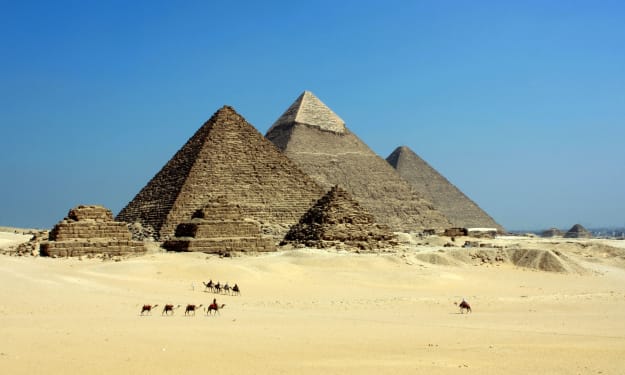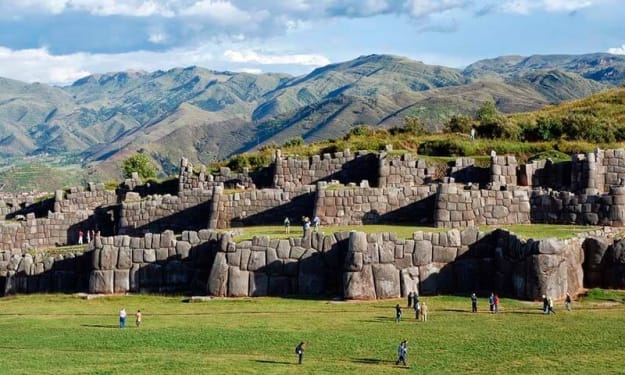Unearthing Truth: Dissecting the Legacy of South Africa's Empty Land Myth
Deconstructing Centuries of Deceit and Its Lasting Impacts on Indigenous Communities and Sociopolitical Struggles

For several centuries spanning from the 1650s to the late 1800s, South Africa experienced a series of European colonizations that would profoundly shape its history. During this period, European powers, particularly the Dutch and later the British, arrived on South African shores with the intention of claiming the land and its bountiful natural resources. The colonization efforts escalated as the potential riches of the region became more apparent. Unfortunately, the pursuit of dominance over this land was marked by aggressive actions against Indigenous communities, forcibly removing them from their ancestral territories. Astonishingly, colonial powers propagated the notion that the land was unoccupied, dismissing the existence of local populations.
This narrative of an "empty land" was perpetuated through various mediums such as letters, travelogues, and maps, often endorsed by administrators, soldiers, and missionaries. Notably, even influential British historians lent support to this false narrative. The concept was solidified in what became known as the "Empty Land Theory," which rested on three main arguments. Firstly, it was claimed that the majority of land being settled by Europeans lacked established communities or agricultural systems. Secondly, any African communities present were portrayed as having entered the regions simultaneously with European settlers, thereby invalidating their ancestral claims to the land. Lastly, it was argued that these African communities likely took the land from earlier Indigenous groups, making the displacement of these communities justified.
Regrettably, all three arguments were grossly inaccurate. The land was far from empty; it had been inhabited by African populations for thousands of years. The cultural practices of Indigenous South Africans diverged from those of the Dutch and British, focusing on communal land ownership rather than individual ownership. Land was held collectively by families or groups, with an emphasis on utilizing the land's agricultural products rather than possessing the land itself. Leaders allocated seasonal land rights, allowing various nomadic groups to graze cattle or gather resources.
Even communities residing in large agricultural settlements did not conceive of land ownership in terms of private property. European colonizers disregarded this intricate system, arrogantly asserting that the land was ownerless and could thus be appropriated by them. The characterization of the land as "empty" was a simplistic misrepresentation of a complex reality. This misunderstanding was exploited by British academics, enabling them to reshape history and downplay the existence of native populations.
The Glen Grey Act of 1894 epitomized the exploitation of this narrative. This act effectively disenfranchised native Africans from land ownership, dismantling the collective tribal ownership system and creating a marginalized class of landless individuals. The European colonizers further justified their actions by depicting local populations as uncivilized and in need of their rule. This strategy of stripping Indigenous peoples of their ancestral lands and portraying them as uncultured has been employed by numerous colonial powers. This tactic, now recognized as the "Empty Land Myth," has left its mark on the histories of various countries, such as Australia, Canada, and the United States.
In South Africa, the repercussions of the Empty Land Myth were particularly profound, directly contributing to a system of institutionalized racism. Dispossessed of their lands, Indigenous South Africans faced a bleak existence as laborers and miners on land owned by European settlers. They were restricted from certain skilled occupations by law and were forced to reside in racially segregated areas. Over time, these discriminatory policies intensified, leading to the implementation of apartheid. Under apartheid, African individuals were denied voting rights, and their education was tailored to reinforce their subservience to white settlers.
The grip of legally sanctioned racism persisted well into the 1990s. Throughout this era, the Empty Land Theory was repeatedly invoked to rationalize the uneven distribution of land. South African resistance movements tirelessly fought for political and economic liberation throughout the 20th century. Since the 1980s, South African scholars have utilized archaeological evidence to counteract the skewed historical narrative, striving to present an accurate account of the nation's history. Presently, South African educational institutions are making strides in teaching the genuine history of the region.
Nevertheless, the legacy of the Empty Land Myth remains a deeply injurious narrative. Its impact endures as one of the most harmful stories ever disseminated, a testament to the power of distorted narratives in shaping the course of history and its repercussions for generations to come
About the Creator
nour slimani
Nour here, writing stories that ignite my inner dabbler journalist. Join me as I explore captivating subjects, weaving them into engaging narratives. Let's uncover hidden gems together!
Enjoyed the story? Support the Creator.
Subscribe for free to receive all their stories in your feed. You could also pledge your support or give them a one-off tip, letting them know you appreciate their work.






Comments
There are no comments for this story
Be the first to respond and start the conversation.